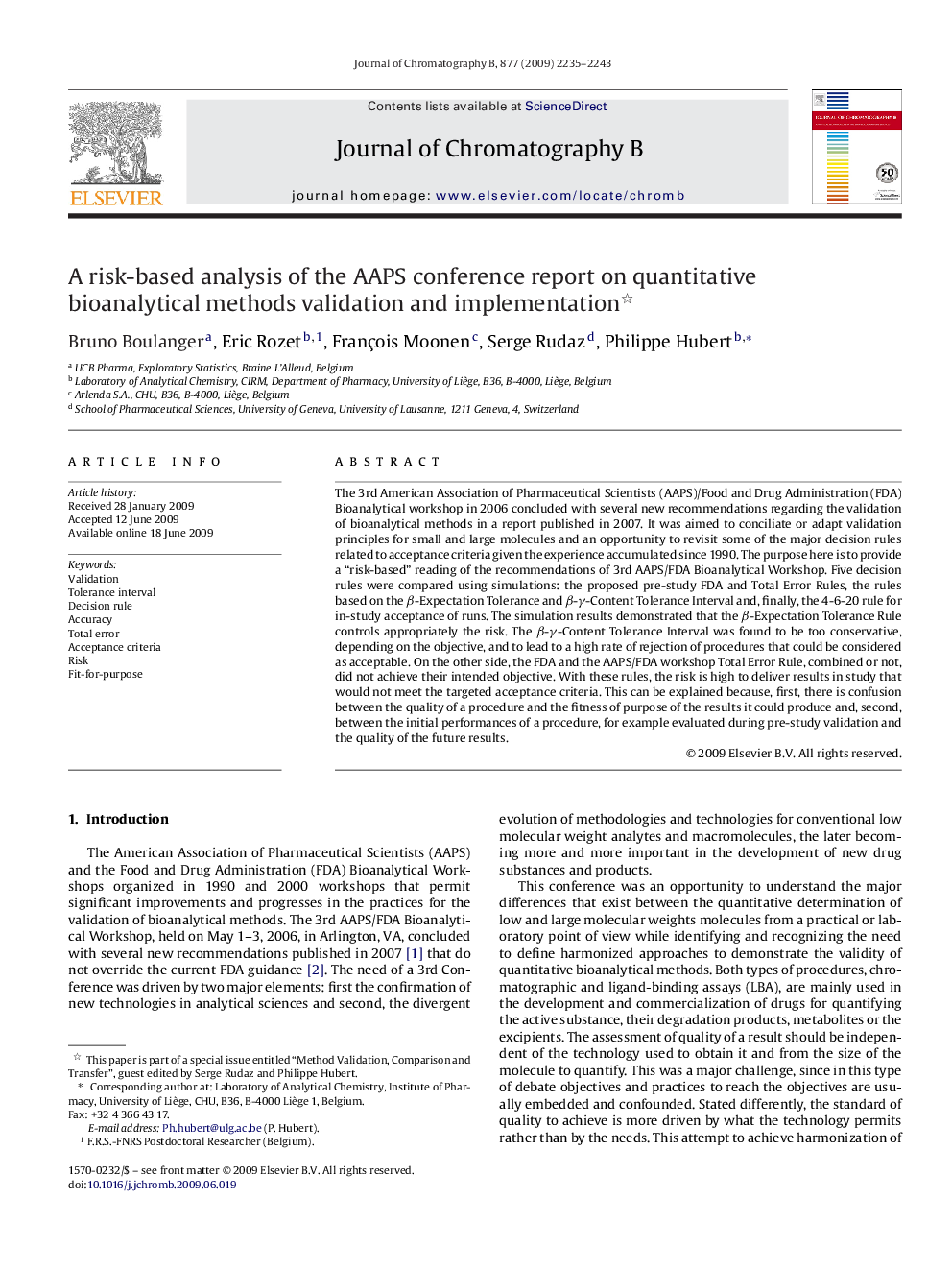| Article ID | Journal | Published Year | Pages | File Type |
|---|---|---|---|---|
| 1214632 | Journal of Chromatography B | 2009 | 9 Pages |
The 3rd American Association of Pharmaceutical Scientists (AAPS)/Food and Drug Administration (FDA) Bioanalytical workshop in 2006 concluded with several new recommendations regarding the validation of bioanalytical methods in a report published in 2007. It was aimed to conciliate or adapt validation principles for small and large molecules and an opportunity to revisit some of the major decision rules related to acceptance criteria given the experience accumulated since 1990. The purpose here is to provide a “risk-based” reading of the recommendations of 3rd AAPS/FDA Bioanalytical Workshop. Five decision rules were compared using simulations: the proposed pre-study FDA and Total Error Rules, the rules based on the β-Expectation Tolerance and β-γ-Content Tolerance Interval and, finally, the 4-6-20 rule for in-study acceptance of runs. The simulation results demonstrated that the β-Expectation Tolerance Rule controls appropriately the risk. The β-γ-Content Tolerance Interval was found to be too conservative, depending on the objective, and to lead to a high rate of rejection of procedures that could be considered as acceptable. On the other side, the FDA and the AAPS/FDA workshop Total Error Rule, combined or not, did not achieve their intended objective. With these rules, the risk is high to deliver results in study that would not meet the targeted acceptance criteria. This can be explained because, first, there is confusion between the quality of a procedure and the fitness of purpose of the results it could produce and, second, between the initial performances of a procedure, for example evaluated during pre-study validation and the quality of the future results.
